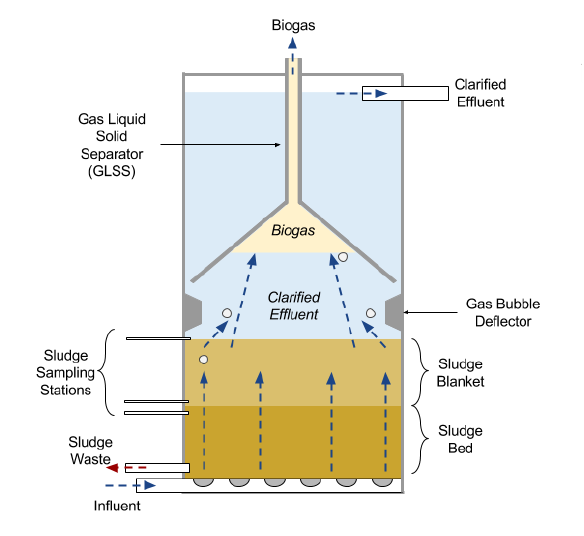Ge Gao, Maithili Gokarn, Walker Grimshaw, Caitlin Rose McKinley, Liankun Zhu
Abstract:
Wastewater treatment is an important issue worldwide. Over one billion people across the world have connections to disposal methods for wastewater that remains untreated and instead is directly deposited into the environment, posing great human and environmental health risks. This research represents a union of the AguaClara program at Cornell and the Richardson Lab, with the long term goal of developing a gravity driven system for wastewater treatment and to characterize the general mechanism for anaerobic waste treatment. This team has and will operate under the principles of reducing human impact on the environment by effectively treating domestic wastewater before reintroduction to natural bodies of water and treating waste as a source of energy rather than a sink. Anaerobic treatment methods have been identified as the most appropriate for use in the global south due to their small footprint, low energy requirements, and slow rate of biomass growth. This semester six lab-scale reactors were constructed and operation begun to determine methods for controlling waste treatment efficiency and methane capture. Full scale reactors will use the methane produced within as an energy source to make the waste treatment an energy neutral or energy positive process. Of the six reactors, three were Anaerobic Fluidized Bed Reactors (AFBR) and three were Upflow Anaerobic Sludge Blanket (UASB) reactors. Though the reactors were only operated for a short period of time, they will continue to be operated in the future while data is collected for Chemical Oxygen Demand (COD) removal in addition to biogas production and specifically the methane levels within this biogas. One mathematical model was developed this semester to understand the fluidization characteristics of bio-granules as they develop on support media in the AFBR reactors. This model influenced the decision to use 0.1 mm quartz powder as a support media, and tests will be performed in the future to ensure this model corresponds with the fluid dynamics within the reactors. Microscopic techniques were investigated to determine their efficacy for elucidating the orientation and activity of microbial populations within the anaerobic granules. It is likely these techniques will be used in the future along with quantitative PCR techniques to understand the granules better. Other short term objectives for the study of wastewater treatment in the global south are to reach steady state operation of the reactors in terms of methane production and COD removal and exploration of new influent geometries to best fluidize the sand bed with such small support media.




